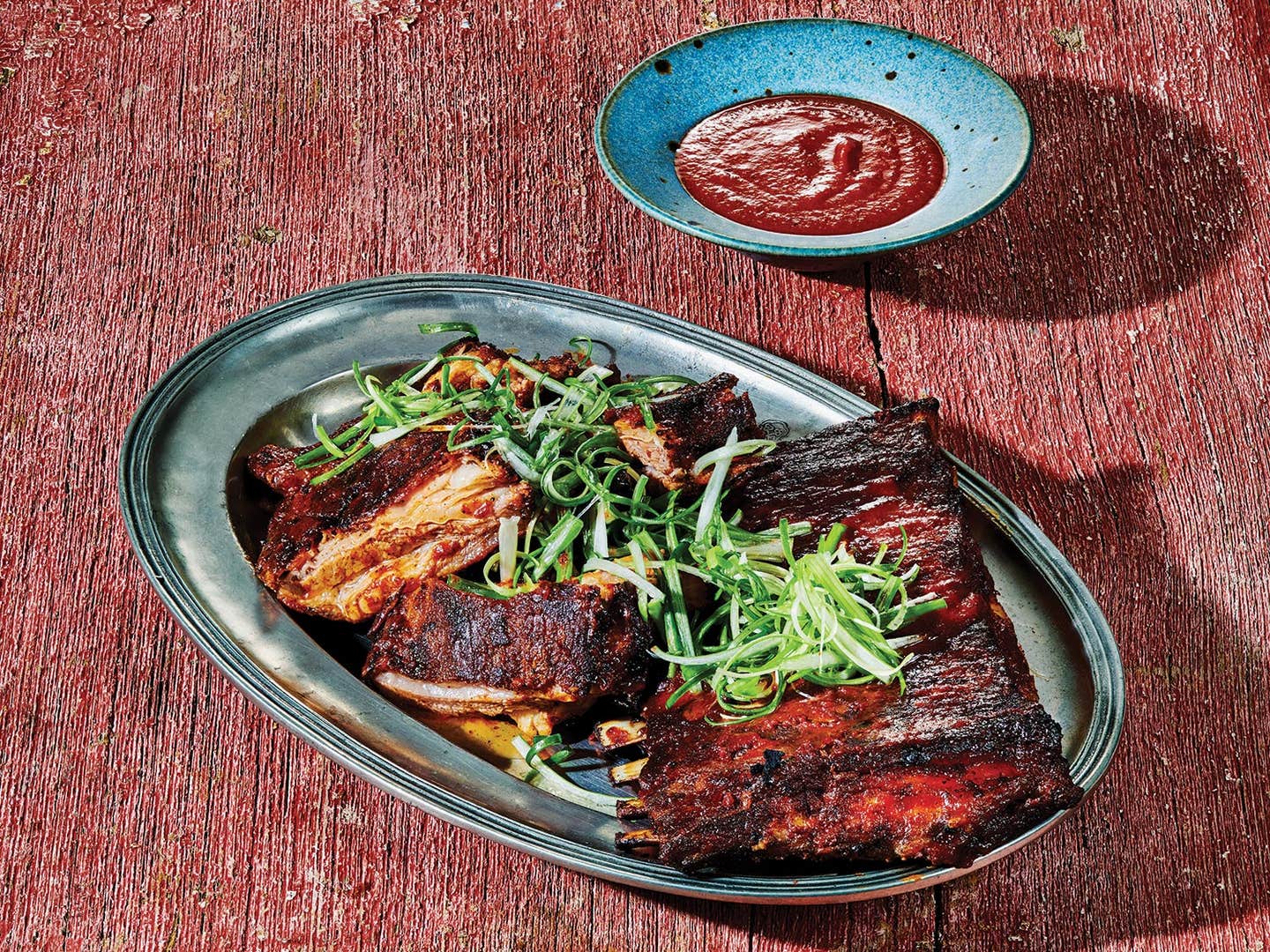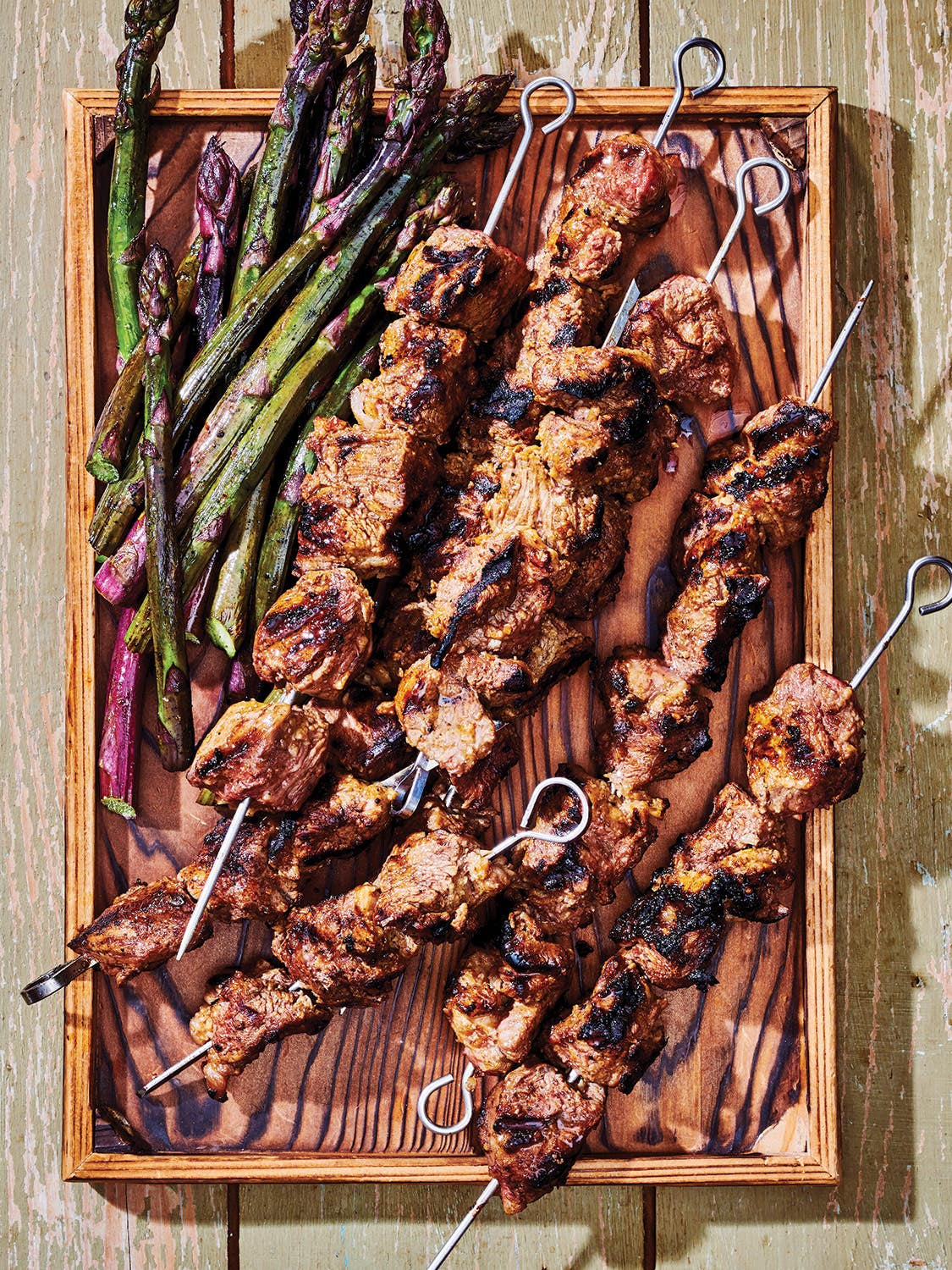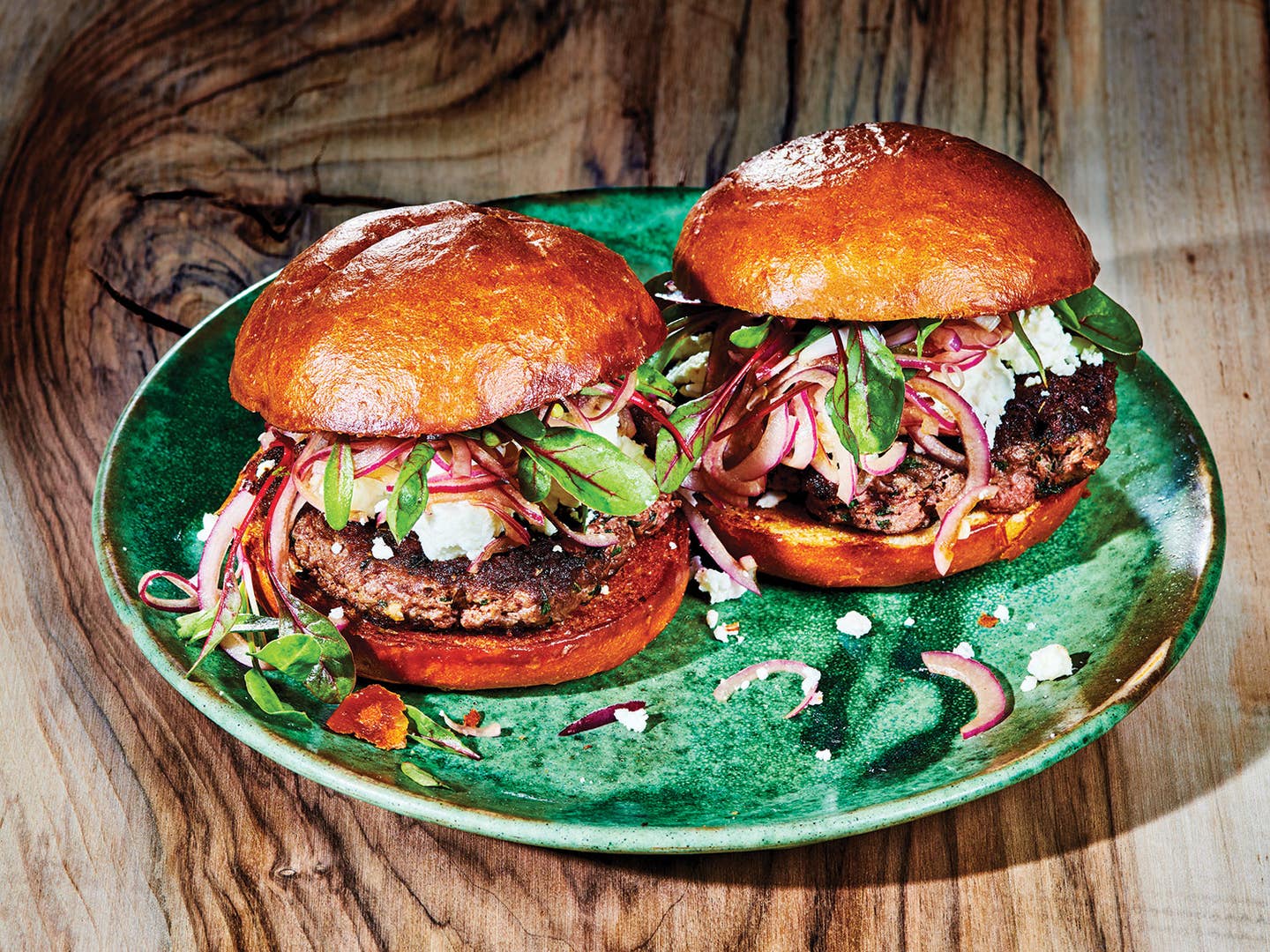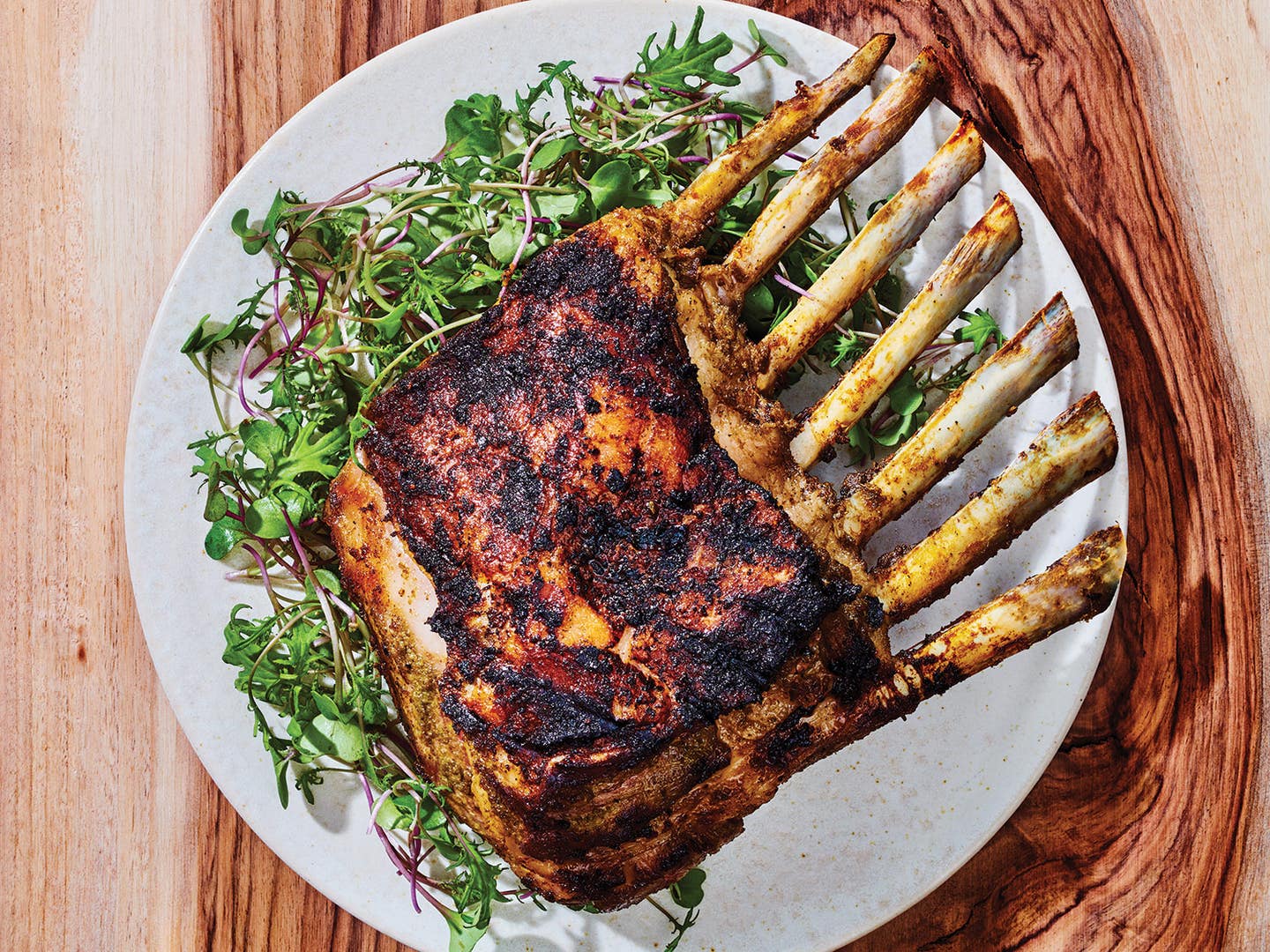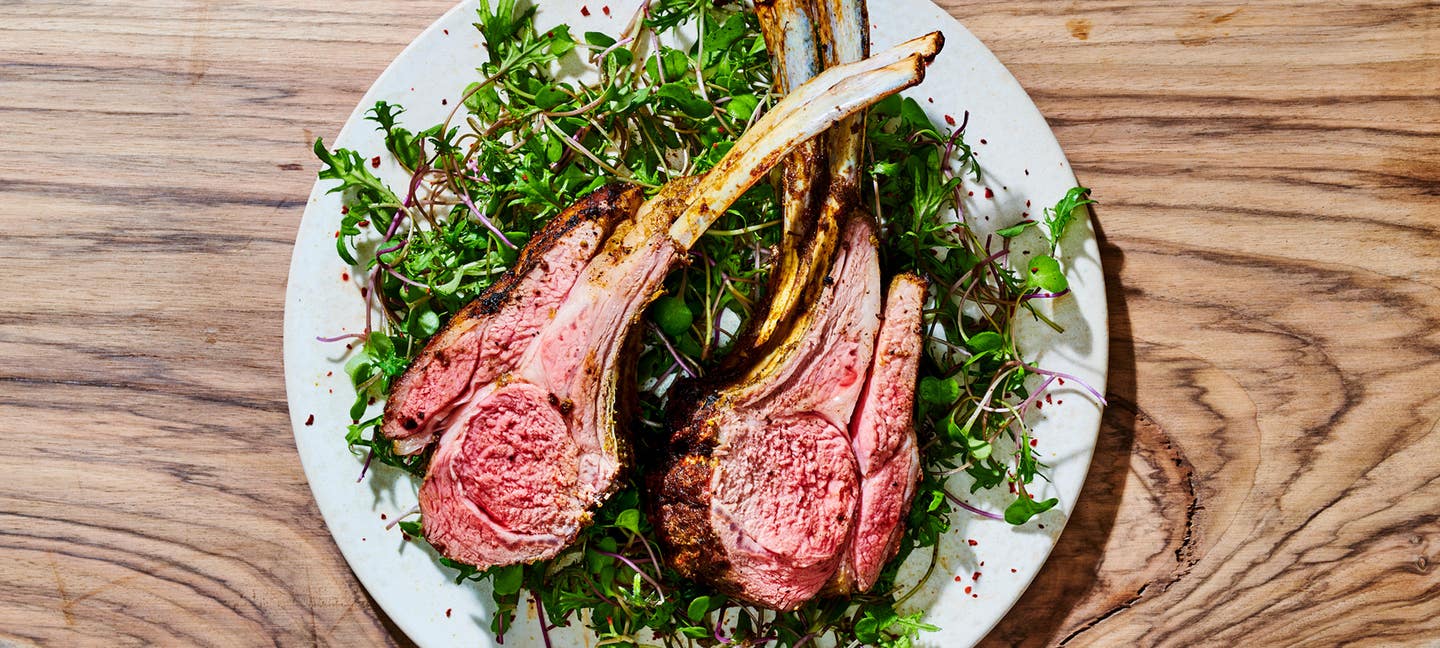
Eating More Lamb Could Change the Future of Appalachia
Saving the region’s coal-blighted economy might mean a return to its once-thriving sheep-farming industry
Nothing is flat here. It’s all rolling hills, misty hollers, rhododendron thickets, and serpentine roads. It’s the rises and falls in the pavement that make my belly tense up as Amy Manko and her husband, Scooter, drive me around their slice of Appalachia in an early-fall rain.
Here in the southwest corner of Pennsylvania, history matters. Most people can trace their local lineage back hundreds of years; they take pride in their role in the Whiskey Rebellion and in their Civil War soldiers. But it’s another history that’s really shaped this place: The geologic process that formed this steep terrain 300 million years ago left something valuable behind. We are in the heart of coal country.
For much of its recent history, this country has run on coal, lots of it produced here in Washington, Greene, and Fayette counties. Many of the small towns were founded by coal companies, and the region became a hub for manufacturing and industry. But as power plants have converted to using cheaper, somewhat more environmentally friendly natural gas, demand for coal has dipped drastically. Between 2005 and 2015, production fell by nearly 50 percent.
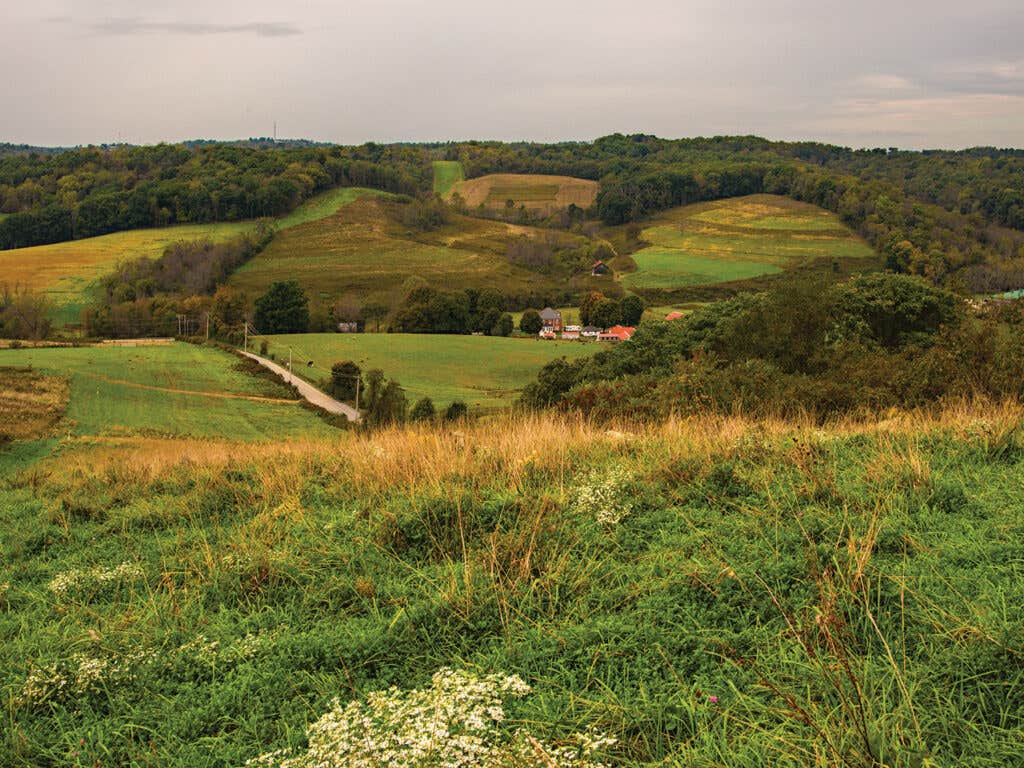
Greene County is still home to the Bailey Mine—the largest underground-mining complex in the country—but over the past decade, its two major competitors, dozens of smaller mines, and myriad businesses dependent on the coal economy have closed, taking thousands of jobs with them.
This economy hasn’t always centered on mining, though. Before the first shaft opened, another industry thrived in the rocky landscape.
“A century ago, this was the center of the universe for sheep,” says Scott Sheely, special assistant for workforce development at the Pennsylvania Department of Agriculture. The rolling topography doesn’t lend itself to the crops that dominate most of Pennsylvania, as Amy points out when I ask about the lack of cornfields. It’s tough to drive a tractor at a 45-degree angle—but it’s heaven for ruminants. “The soil, grass, and topography aren’t good for many things,” Sheely explains, “but they’re perfect for sheep.”
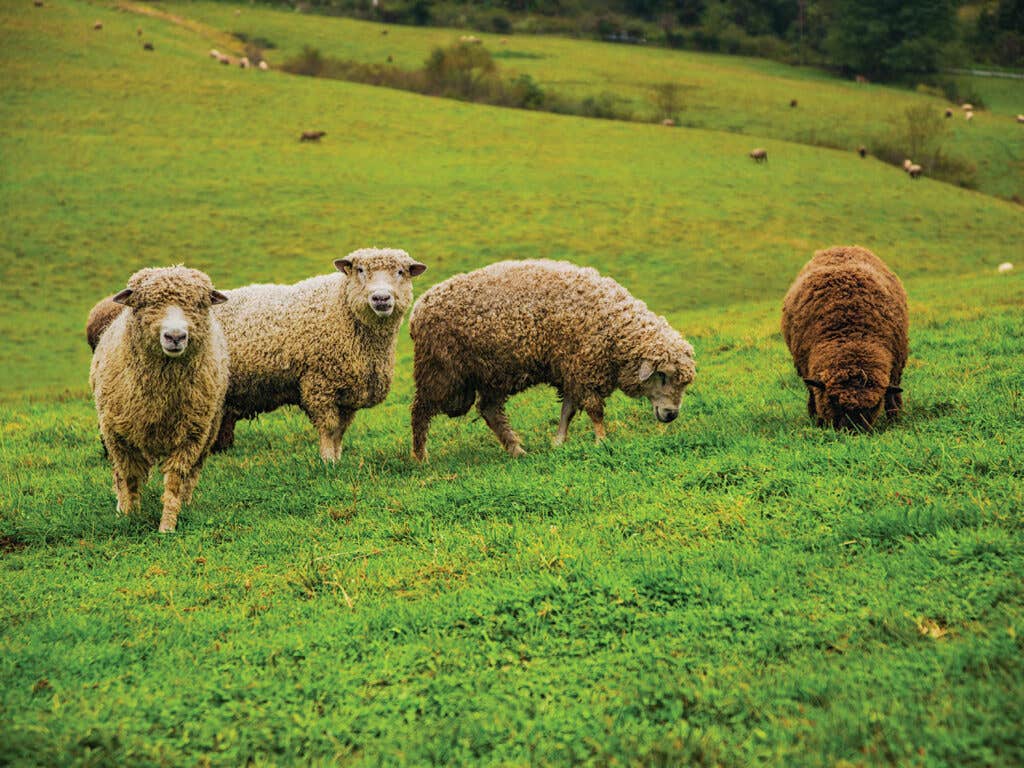
Sheep arrived in North America with the Jamestown colonists, and by the 1640s, there were about 100,000 of them roaming the Northeast. As families moved farther afield and immigration increased, the number of sheep rose exponentially. It wasn’t just the landscape that made northern Appalachia an ovine Eden. The area was settled primarily by the Scots-Irish, who brought customs, such as sheep herding, with them from home.
The relative ease and affordability of raising sheep kept their numbers growing, and the market kept pace. American sheep production peaked during World War II, when there were more than 55 million head spread across the country, with vast herds concentrated in northern Appalachia. Thanks to its availability, canned mutton was shipped in bulk to soldiers overseas. GIs ate so much of the meat that many came home swearing they’d never eat it again.
Around the same time, the American appetite in general was changing. English-style menus that featured gamier meats were replaced by lighter, chicken- and pork-dominated fare. In 1945, the average American ate about 7 pounds of lamb or mutton a year, according to the American Lamb Board. By 2011, consumption had dropped to less than a pound, and nearly half of Americans had never even tried it.
As lamb and mutton fell out of vogue in the second half of the 20th century, slaughterhouses and feed mills were shuttered. Farmers went to work at power plants and mines instead, and producers in New Zealand and Australia filled the remaining markets for lamb meat in the United States—mostly in cuisines of Indian, Middle Eastern, and Mediterranean families. Mutton disappeared from supermarkets almost entirely.
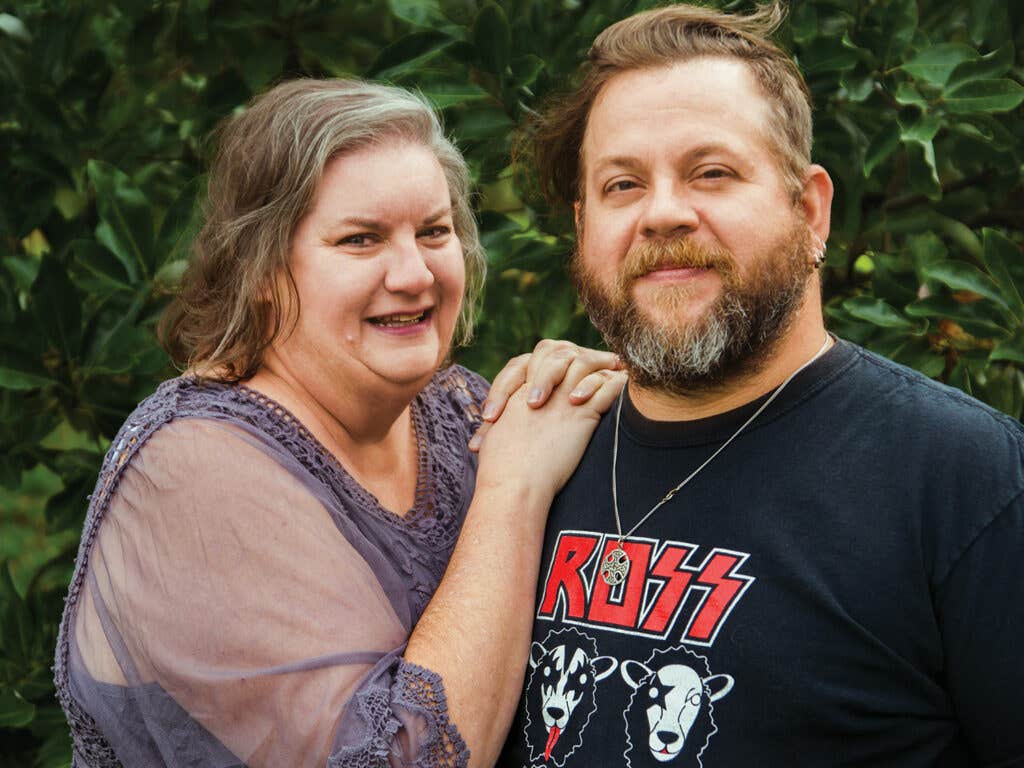
Amy's family, however, has raised sheep here continuously for more than 200 years. In 1991, she inherited the Ross Farm—a homestead with a spot on the National Register of Historic Places—and today it's home to about 200 sheep in shades of black, brown, and ivory. We stand in a pasture behind her house as she points out woolly dots on the hill.
“Romney, Gulf Coast Native, Romeldale, Cheviot,” she lists. “Jacob, Leicester Longwool, English Blue, Cotswold.” They’re all rare heritage breeds whose genetics Amy is working to preserve, and in doing so, she’s discovered a unique market.
“There are some chefs who are very excited to buy breed-specific meat,” she says. “The Livestock Conservancy has tasting notes on all the breeds, and some people are really into that.” A lot of people, it turns out. Lamb is an ingredient that seems to be on the rise back to relative popularity. A 2017 study by market analytics firm Juniper Economic Consulting found that demand for lamb in the U.S. rose 10 percent between 2014 and 2016. The USDA’s annual lamb and mutton forecasts tell a similar story, predicting that 387 million pounds of lamb will be produced or imported in 2018, a 20-million-pound increase over 2016.
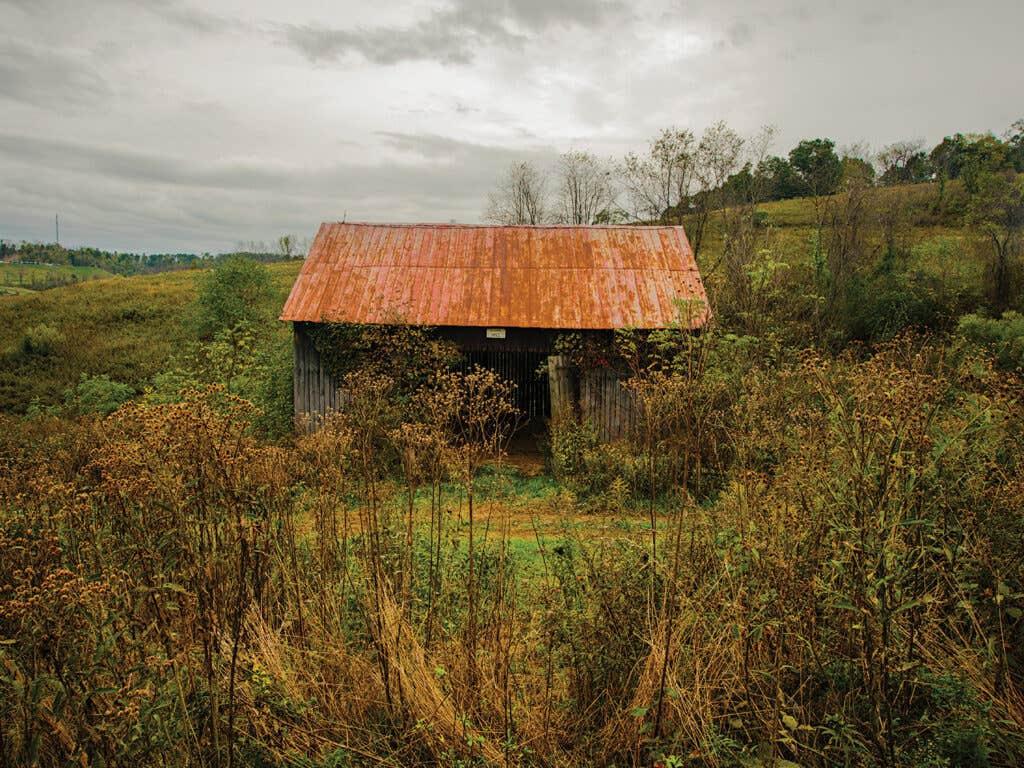
The resurgence couldn’t come at a better time for southwestern Pennsylvania. As the nation’s dependence on coal has dried up, so have the small-town economies. In fall 2017, the Appalachian Regional Commission, an economic development agency that prioritizes funding for projects that reflect Appalachia’s cultural heritage (like, you guessed it, sheep farming) dedicated $1.75 million to reinvigorating the area’s economy through agriculture. The grant was matched by state and local governments, and a plan emerged to use the $3.5 million to facilitate a return to the region’s roots: teaching people to raise sheep, and helping them make a living doing it.
“This isn’t a 1-for-1 plan to replace coal jobs,” Sheely says. “This is a long-term plan for wealth regeneration. It’s about coal-impacted communities, and helping people help themselves.” For the project’s first year, Amy served as the operation’s boots on the ground, organizing seminars on farm loans and animal vaccination and shearing, and working to re-create the thriving local meat market that existed here a century ago. She left the position in late 2018 but continues to serve as an advocate and educator for a collective that includes established farmers with 2,000 sheep, beginners with just a few lambs, and people left jobless by mine closures who are considering starting a herd.
“Sheep farming is a unique fallback for displaced coal workers because it doesn’t require any real specialty training,” Amy says. “As long as you have dirt, the ability to build a fence, and something to fashion into a shelter, you can get yourself into the business.”
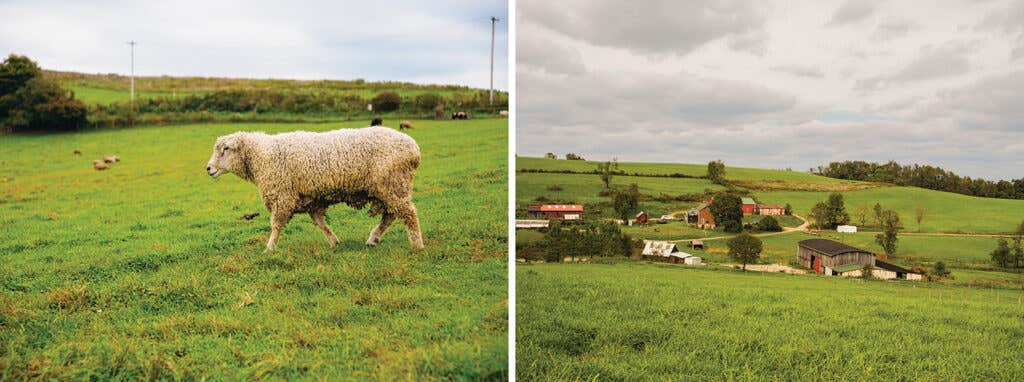
Right: Darrell Becker's farm Aaron Blum
Darrell Becker, 68, spent most of his career building coal barges on the nearby river. It was good work, he remembers, when you could get it. “When they needed barges to ship the coal up the river, all these facilities would spring up,” he explains.
“Then, of course, the plants would close down.” Since most of the mines have closed, there’s little demand left for expertise like Becker’s. Two years ago, he retired and turned his attention to Fruit Hill Farm—putting the 100-plus acres he inherited from his father-in-law to use. “I’m spending all my 401(k) money putting up fences,” he says. “I’d like to get up to 100 sheep, but my biggest goal right now is growing grass.”
Amy calls Becker her star pupil: He attended every workshop she hosted, from lambing lessons to genetics seminars, using the learned skills to care for his starter flock of 20 sheep. Eventually, he hopes his two children will run a flourishing sheep enterprise on this land. His career in the coal industry, Becker says, feels like a past life. And though he insists he’s got a lot more to learn about running a farm, it’s hard to imagine him anywhere but here, leading me through a sloped pasture, his Great Pyrenees loping along behind.
"The county population has gone down, and the family farms are going away," he laments. "Farming is expensive, and it's certainly not easy. So, you think, Why in the hell would someone want to do this?" He reaches down to pet the dog and gives me an aw-shucks grin. "You've got to be nuts, but I love it."
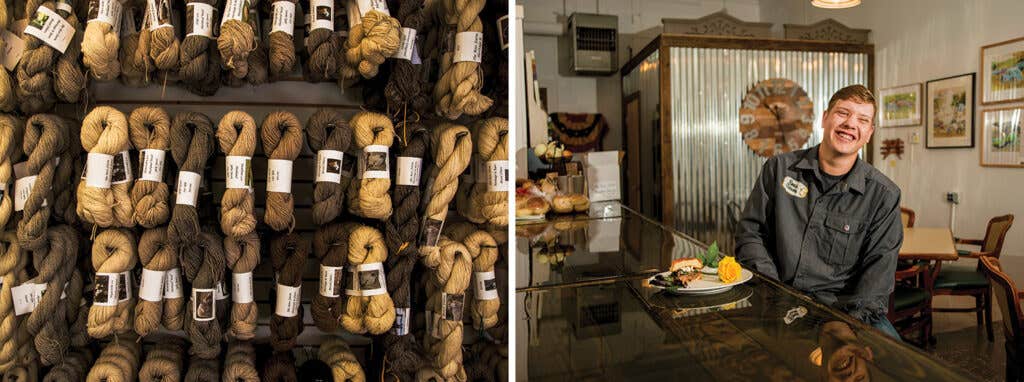
Right: Next-generation farmer Drew Manko oversees the sheep at Ross Farm. Aaron Blum
On the Ross Farm, Amy has turned over most operations to her son Drew, who's already gotten a little creative, partnering with a local whiskey distiller to use their spent grain mash as a high-protein finisher for the Ross Farm lambs. At 24, Drew is eager to do his part to put sheep back on the American plate, but he's under no illusions about the challenges farmers—particularly those of his generation—are facing.
According to the most recent census, the average age of farmers in the U.S. is 58.5. Young people aren’t taking over the family farm, Drew says, because the industrialization of the trade means that “it’s tougher to make a living than it used to be. Everyone I know has a second or third job to support their farm. There’s a divide among the old-timers. Half think you’re crazy for thinking you’re going to get into this industry and change it. The other half are excited that you’re taking it in a new direction.”
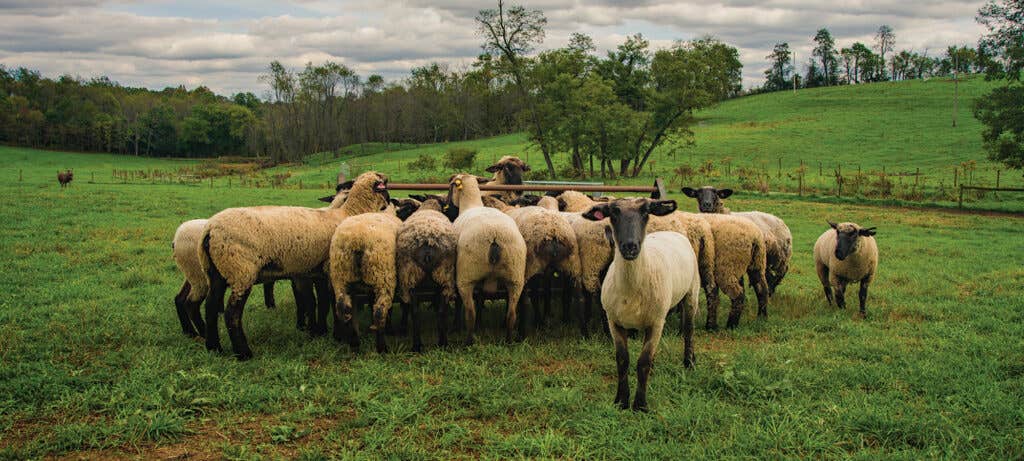
Becker thinks there’s a promising future for small-scale agriculture, but he sees some major flaws in the system. Almost none of the lamb and mutton raised in the region is consumed here, primarily because there’s almost nowhere to have the meat processed. Local slaughterhouses are few and far between, and they’re busy with cattle and pigs, both of which give butchers a much higher profit margin than they’d get processing sheep.
As a result, most producers drive their sheep more than four hours across the state to a livestock auction in New Holland. The meat, bound for East Coast metropolises, never touches the local market, and for the farmers, the auction is kind of a crapshoot. “You might read the reports from the week before, and buyers are paying $2.50 a pound,” Amy says. “Then you drive them or ship them to New Holland, and that week there are no buyers, and you get $1.50. Now all your lambs are gone, and your year is a loss.”
The solution Amy, the Department of Agriculture, and the ARC are working toward involves finding buyers for the meat—supermarket chains, food-service companies, and even dog-food producers—right here in the region.
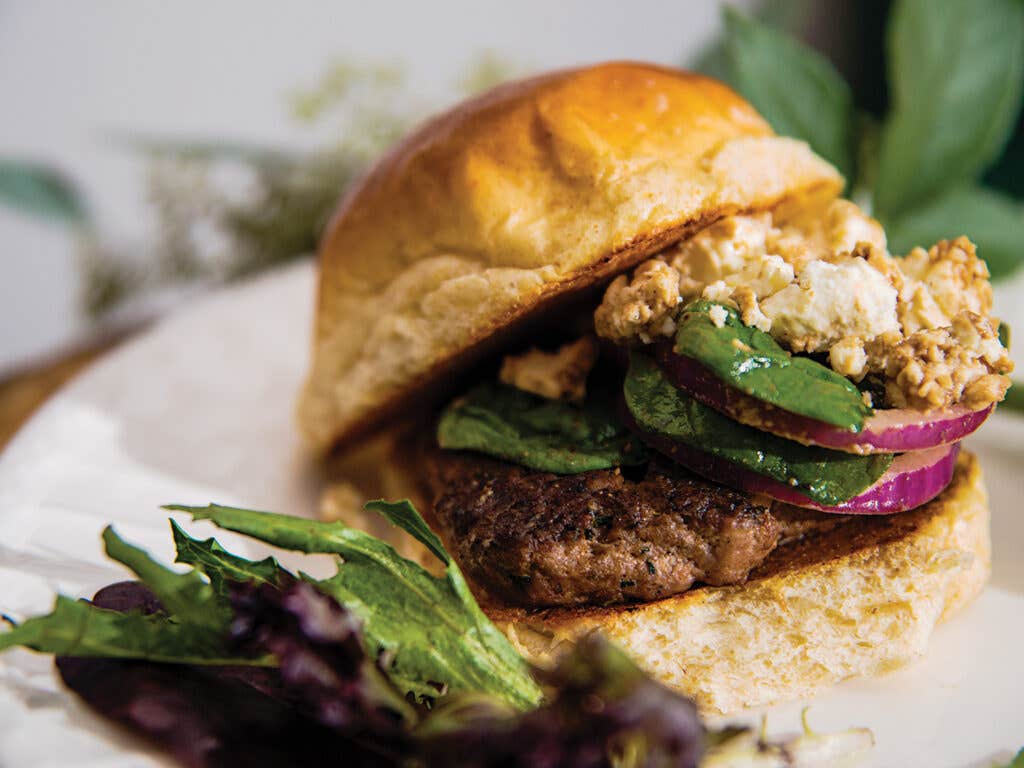
The first bite of my lamb burger tastes like all things at once: It’s rich and sweet, with a little cumin and the coolness of fresh mint, topped with creamy feta. It’s the brainchild of Racquelle Fava Rockwell and Alisa Fava-Fasnacht, sisters who grew up on a local dairy farm and turned to cheesemaking when the milk industry began to nosedive. They sell their cheeses, plus a wide array of other local foods and a lunch menu highlighted by this perfect burger, from the Marketplace at Emerald Valley, on Main Street in downtown Washington, Pennsylvania. Since they opened the store in late 2017, it’s been consistently busy. “People who want good local food,” Rockwell says, “are going to come find it.”
This is the other half of Amy’s mission: to get lamb and mutton on as many menus as possible, and build a tiny sphere of high demand right here. The “if you build it, they will come” mentality is shared by Mark Kennison, a serial entrepreneur who’s determined to restore his hometown to its former glory. In the span of a few years, Kennison has opened a pizza joint, a coffee shop, and a small grocery store on Main Street. Once they were all humming along, he sold them to fellow locals and put a down payment on a boarded-up dive bar.
“The town’s decay didn’t bring in gangs or violence,” he says, “just empty storefronts. So, it wasn’t, ‘How do we get rid of these bad elements?’ it was just, ‘Could someone please put up an open sign?’ ”
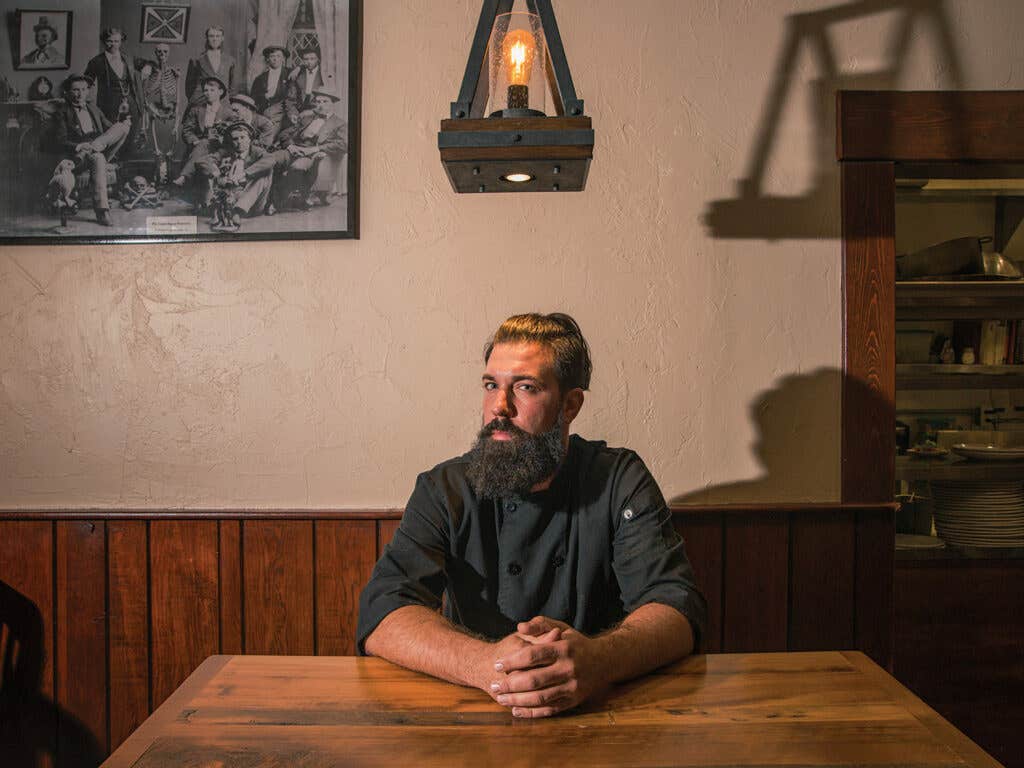
The newly reopened Presidents Pub has a seasonal menu with as many locally sourced ingredients as Kennison and chefs Adam Smith and Scott Roberts can find. They constantly rotate their lamb specials—dishes such as a lamb ham, brined for a week with fennel, brown sugar, rosemary, and lemon, then glazed with a rosemary maple bourbon syrup—to encourage diners to give the protein a second look.
“People say, ‘Ah, well, I don’t usually order lamb, but I’ll try this local special,’” Kennison says. “The more we introduce and talk about it, the more fans we’re winning over.” The chefs pay homage to what Kennison calls “old-English pub-style methods” and the area’s Scots-Irish heritage with brunch dishes such as porter-braised corned lamb hash and Scotch eggs with cumin, coriander, and cayenne-spiced lamb sausage, breaded, fried, and topped with Jameson-spiked “drunken mustard.”
“We like to experiment and revisit the things you don’t really find on menus anymore,” Kennison says. “We’re a farming region, a hunting region, and a colonial region, and I’m trying to put all of that on a plate.”
So far, it seems to be working. Whenever Presidents Pub features a lamb dish, it’s almost guaranteed to sell out. Kennison thinks the resurgence of the local economy, the region’s agricultural history, and a good meal are inextricably intertwined.
“Food is where families and friends get together and talk about our dreams,” he says. “That’s why it’s important. It keeps bringing us together around the table, talking about local movements. Local agriculture and local food—that is what’s going to rebuild these towns that have almost disappeared.”
Lamb Recipes Four Ways
Lamb Ribs with Spicy Harissa Barbecue Sauce
Fatty lamb ribs are rubbed with spices and glazed with harissa-laced barbecue sauce, yielding an irresistible sticky-sweet crust. Get the recipe for Lamb Ribs with Spicy Harissa Barbecue Sauce »
Chunks of lamb shoulder are rubbed with spices and marinated with aromatics before hitting the grill in this easy kebab recipe. Get the recipe for Grilled Marinated Lamb Kebabs
At the Marketplace at Emerald Valley in Washington, Pennsylvania, lemon zest and fresh mint go into every lamb burger patty. A tangle of sweet balsamic onions, a hint of chile, and briny feta balance the charred meat and brioche bun. Ground lamb falls on the fattier side; if using a grill, watch out for flare-ups. Lamb Burger with Mint, Feta, and Balsamic Onions
Keep Reading
Continue to Next Story
